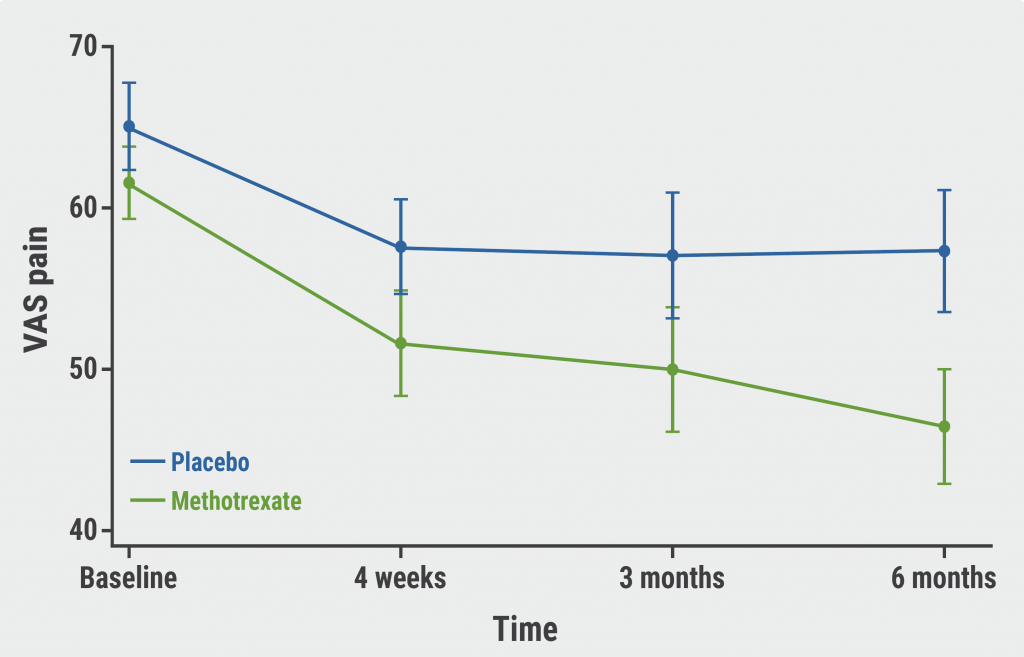Active smoking is an established risk factor for RA [2]. The role of passive smoking in the development of RA has not been studied thoroughly. The E3N-EPIC cohort study focuses on diet and hormones as major components of women’s health and the team performs analytical epidemiological research with interests in environment. The current analysis of E3N-EPIC was presented by Dr Yann Nguyen (Université Paris-Saclay, France) and aimed to fill this gap in the literature. The study included 79,806 women (mean age at baseline 49.0); 698 incident RA cases have been identified since the initiation of the project in 1990. At baseline, participants were asked whether they were exposed to passive smoking in their childhood or adulthood. A cox proportional hazards model was used to analyse the data. The adjusted model controlled for active smoking, passive smoking exposure in childhood or adulthood, educational level, and baseline BMI. Data was stratified on active smoking status (ever-smoker or never-smoker).
Passive smoking in childhood (non-cases 13.5% vs RA cases 16.3%; HR 1.24; 95% CI 1.01–1.51) and adulthood (non-cases 53.6% vs RA 57.45%; HR 1.19; 95% CI 1.02–1.40) were significantly associated with an increased risk of RA. Among the participants exposed to passive smoking, the effect was larger for ever-smokers compared with never-smokers (absolute risk 53.67/100,000 vs 47.59/100,000 per year). Both these subgroups had an increased risk of RA compared with never-smokers with no exposure to passive smoking: being a never-smoker with exposure to passive smoking had an HR 1.33 (95% CI 1.08–1.6), ever-smoker plus exposure to passive smoking had an HR 1.50 (95% CI 1.22–1.84).
Participants who were not exposed to passive smoking and never smoked had a later age of disease onset (mean age 66.5) compared with participants who were exposed to passive smoking (mean age 63.7), had actively smoked (mean age 63.4), or had been exposed to passive smoking and had actively smoked (mean age 62.3). In addition, in the subgroup of the childhood passive smoking, ever-smokers had an earlier age of RA onset than never-smokers (mean age 60.6 vs 64.2). Dr Nguyen summarised the findings by saying that exposure to passive smoking in childhood and/or adulthood is associated with an increased risk of RA, and that passive smoking in childhood could lead to an earlier age of RA onset. He suggested that the results could be explained by a citrullination effect of passive smoking in genetically predisposed individuals.
- Nguyen Y, et al. Association between passive smoking in childhood and adulthood and rheumatoid arthritis: results from the French E3N-EPIC cohort study. OP0010, EULAR 2021 Virtual Congress, 2–5 June.
- Di Giuseppe D, et al. Arthritis Res Ther. 2014;16(2):R61.
Copyright ©2021 Medicom Medical Publishers
Posted on
Previous Article
« Ultrasound is useful for disease monitoring in giant cell arteritis Next Article
Updates on COVID-19 vaccines in patients with rheumatic disease »
« Ultrasound is useful for disease monitoring in giant cell arteritis Next Article
Updates on COVID-19 vaccines in patients with rheumatic disease »
Table of Contents: EULAR 2021
Featured articles
COVID-19 Update
Rituximab or JAK inhibitors increase the risk of severe COVID-19
Updates on COVID-19 vaccines in patients with rheumatic disease
Immunomodulatory therapies for severe COVID-19: literature update
New Developments in Rheumatoid Arthritis
JAK inhibitors and bDMARDs not associated with increased risk of serious infections in RA
Remote management of RA is a feasible alternative for outpatient follow-up
TOVERA: Ultrasound is a promising biomarker of early treatment response
The risks of polypharmacy in RA
ABBV-3373: A potential new therapeutic agent for RA
JAK inhibitors and bDMARDs show comparable effectiveness
Spondyloarthritis: Progression in Therapies
SELECT-AXIS: 64-week results of upadacitinib in active ankylosing spondylitis
Guselkumab efficacious in PsA patients with inadequate response to TNF inhibition
Faecal microbiota transplantation not effective in active peripheral PsA
Risankizumab meets primary and ranked secondary endpoints in PsA
Prognostic factors for minimal disease activity in early psoriatic arthritis revealed
Imaging in Large-Vessel Vasculitis
PET/CT is a reliable measure of disease activity in LVV, but does not predict future relapses
Ultrasound is useful for disease monitoring in giant cell arteritis
Prevention in Rheumatic Diseases
Air pollution predicts decreased response to biological treatment in rheumatic diseases
Passive smoking associated with an increased risk of RA
Gene-Environment Interaction in Gout
Gene-diet and gene-weight interactions associated with the risk of gout
What Is New in Systemic Lupus Erythematosus
Intensified treatment regimen of anifrolumab for lupus nephritis is promising
Systemic lupus erythematosus: increased risk of severe infection
Juvenile Idiopathic Arthritis and Osteoarthritis
Efficacy and safety of secukinumab in juvenile idiopathic arthritis
Emerging therapies and future treatment directions in osteoarthritis
Related Articles
July 21, 2022
New treatments in osteoarthritis
December 1, 2023
Repeat steroid injection in knee osteoarthritis possibly beneficial

July 31, 2023
Methotrexate lowers pain in inflammatory hand OA
© 2024 Medicom Medical Publishers. All rights reserved. Terms and Conditions | Privacy Policy
HEAD OFFICE
Laarderhoogtweg 25
1101 EB Amsterdam
The Netherlands
T: +31 85 4012 560
E: publishers@medicom-publishers.com

